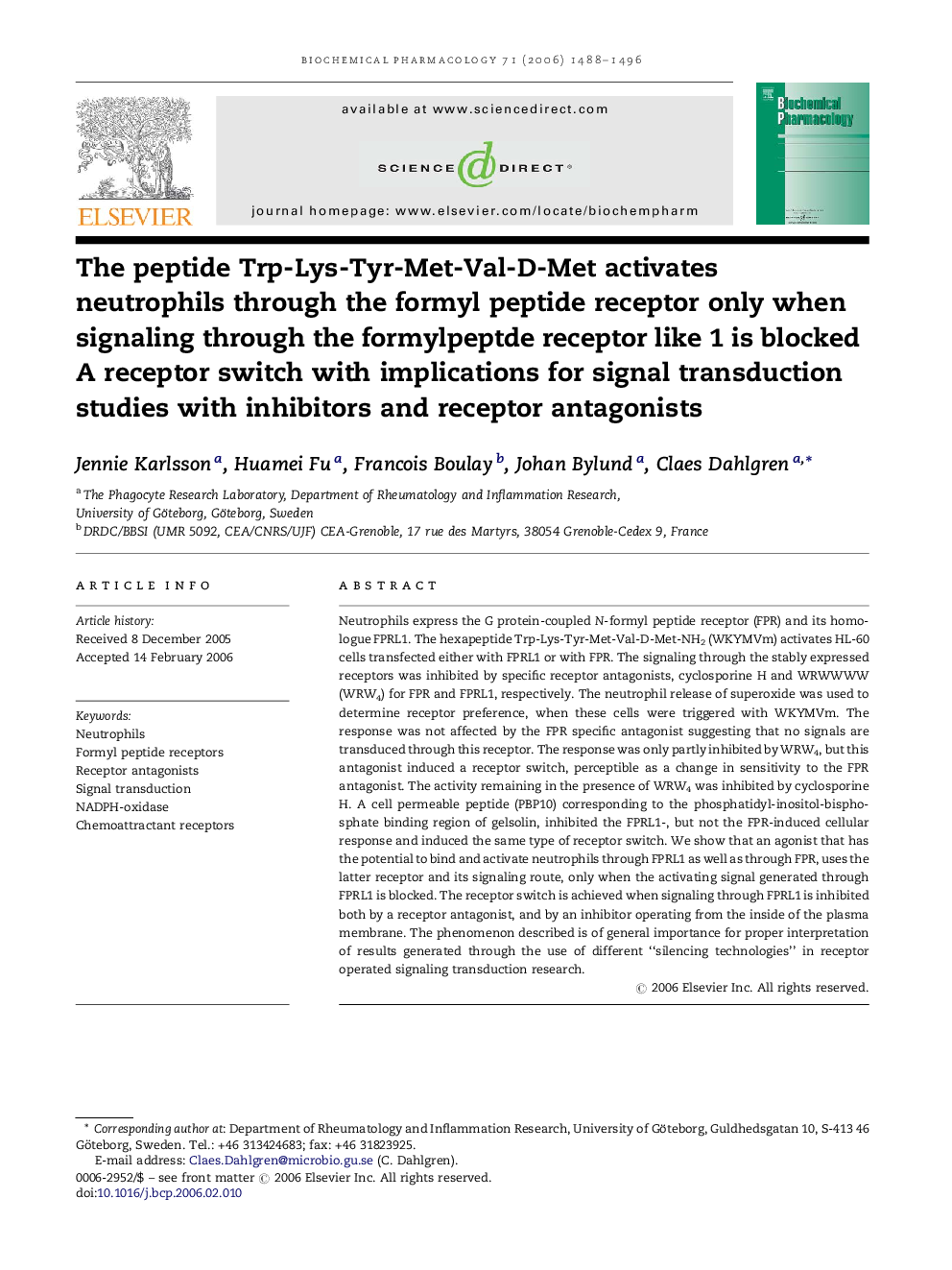| Article ID | Journal | Published Year | Pages | File Type |
|---|---|---|---|---|
| 2515454 | Biochemical Pharmacology | 2006 | 9 Pages |
Neutrophils express the G protein-coupled N-formyl peptide receptor (FPR) and its homologue FPRL1. The hexapeptide Trp-Lys-Tyr-Met-Val-D-Met-NH2 (WKYMVm) activates HL-60 cells transfected either with FPRL1 or with FPR. The signaling through the stably expressed receptors was inhibited by specific receptor antagonists, cyclosporine H and WRWWWW (WRW4) for FPR and FPRL1, respectively. The neutrophil release of superoxide was used to determine receptor preference, when these cells were triggered with WKYMVm. The response was not affected by the FPR specific antagonist suggesting that no signals are transduced through this receptor. The response was only partly inhibited by WRW4, but this antagonist induced a receptor switch, perceptible as a change in sensitivity to the FPR antagonist. The activity remaining in the presence of WRW4 was inhibited by cyclosporine H. A cell permeable peptide (PBP10) corresponding to the phosphatidyl-inositol-bisphosphate binding region of gelsolin, inhibited the FPRL1-, but not the FPR-induced cellular response and induced the same type of receptor switch. We show that an agonist that has the potential to bind and activate neutrophils through FPRL1 as well as through FPR, uses the latter receptor and its signaling route, only when the activating signal generated through FPRL1 is blocked. The receptor switch is achieved when signaling through FPRL1 is inhibited both by a receptor antagonist, and by an inhibitor operating from the inside of the plasma membrane. The phenomenon described is of general importance for proper interpretation of results generated through the use of different “silencing technologies” in receptor operated signaling transduction research.
